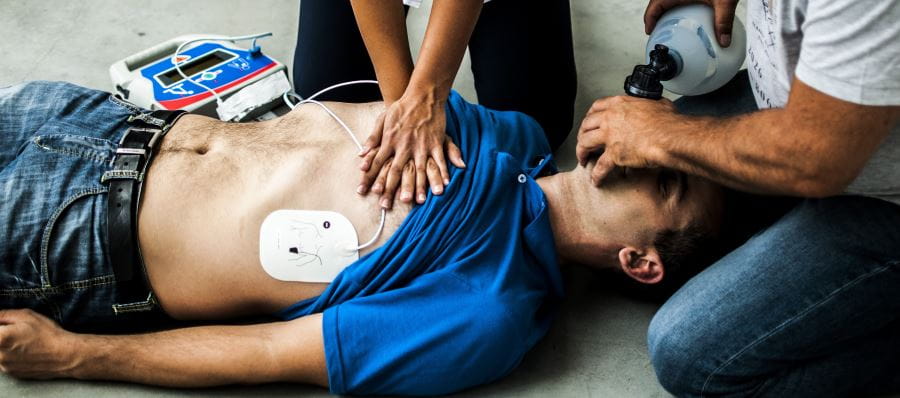
Pressure is mounting on the government to make Automated External Defibrillators (AEDs) mandatory in Australian workplaces, in the same way fire extinguishers and first-aid kits are required. This lifesaving equipment can be critical to a person's survival during an emergency.
A report from the Prehospital, Resuscitation and Emergency Care Research Unit at Curtin University has revealed that there's been a 75% increase in the number of West Australians surviving an out-of-hospital cardiac arrest. This is due to an increase in bystanders stepping in to perform CPR and use public defibrillators where they are available.
Data also shows that patients shocked by a public AED survive at twice the rate of those shocked only by paramedics when they arrive to assist. The discharge alive rate of 57% provides powerful evidence as to the value of public AEDs, CPR training and their impact on survival outcomes.
So what exactly is a defibrillator?
A defibrillator is an electrical device that delivers a dose of electric current (often called a countershock) to the heart. The aim is to correct abnormal electrical activity within the heart known as dysrhythmia. Essentially, it attempts to restart a normal beating rhythm in the heart.
Know your defibrillator!
Defibrillators come in different types, including external, transvenous or even implanted (implantable cardioverter-defibrillators). The public access defibrillators you see installed around the place are AEDs. An AED automates the diagnosis of treatable rhythms, meaning that lay responders or bystanders can use them successfully with just a little training.
How do I best use my defibrillator?
- Turn on the AED and follow the visual and/or audio prompts.
- Open the person's shirt and wipe his or her bare chest dry. If the person is wearing any medication patches, you should use a gloved (if possible) hand to remove the patches before wiping the person's chest.
- Attach the AED pads, and plug in the connector (if necessary).
- Make sure no one, including you, is touching the person. Tell everyone to "stand clear."
- Push the "analyse" button (if necessary) and allow the AED to analyse the person's heart rhythm.
- If the AED recommends that you deliver a shock to the person, make sure that no one, including you, is touching the person – and tell everyone to "stand clear." Once clear, press the "shock" button.
- Begin CPR after delivering the shock. Or, if no shock is advised, begin CPR. Perform 2 minutes (5 to 6 cycles) of CPR and continue to follow the AED's prompts. If you notice obvious signs of life, discontinue CPR and monitor breathing for any changes in condition.
Royal Life Saving WA believes that having functional AEDs in the home, workplace and any area where people gather is vital. For more information and to purchase a HeartStart HS1 First Aid Defibrillator, please click the link below.
